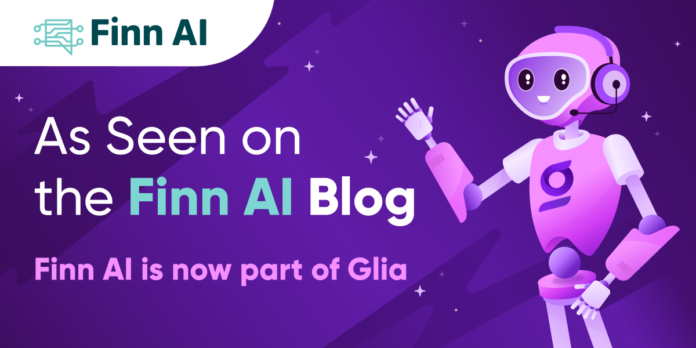This post originally appeared on the Finn AI blog, which is now part of Glia.
There is a hidden economy that everyone has been operating in since the beginning of time—the trust economy. We’re buying and selling in this economy; we’re gathering trust and we’re spending it in our interactions every day. Trust is at the heart of every exchange—trust in other people, but also in organizations, and even in technology like artificial intelligence (AI).
Author and trust expert, Rachel Botsman, described trust as, “the remarkable force that pulls you over that gap between certainty and uncertainty; the bridge between the known and the unknown…trust is a confident relationship with the unknown.” In banking—and in AI—where there is so much unknown, trust is imperative. This is why the economics of trust is such an important field to explore.
“Trust is a confident relationship with the unknown.”
– Botsman, 2017
To know is to trust
In order to operate in the trust economy, you have to earn trust. Customers will only trust you when you can demonstrate that you know them and that you have their best interests in mind.
Banks have more powerful data than any other organization. They know the demographics and the spending habits of their customer base. Despite this, Celent research found that only 44 percent of people feel that their bank knows them.
Customers will only trust you when you can demonstrate that you know them and that you have their best interests in mind.
This is where AI and virtual financial assistants come into play. Virtual financial assistants can open new dialogues with customers and help personalize the user experience. This acknowledgment of the individual, when executed correctly, helps to build and maintain trust.
Quantifying trust
In the past, the meaning of trust was too subjective to apply reliable metrics to. While this is still true in general human-human, human-organization scenarios, AI is opening up new opportunities to quantify trust.
Finn AI is working with banks to leverage large volumes of user behavior data. We’re building a framework that banks can use to determine the trust level of a given set of users and put a quantifiable metric against it.
For example, data scientists can correlate behaviors with trust so that banks can surface insights to better intuit a user’s needs.
Harnessing trust for profitability
Eventually, banks will be able to monitor trust as a key business metric and correlate it with other metrics like customer acquisition costs, customer lifetime value, and even customer churn.
Key trust indicators will deliver actionable insights so banks can make informed decisions about how much they stand to lose or gain by taking certain actions. This will enable banks to dial up or dial down certain trust-building or trust-eroding actions based on the trust level of individual users.
Banks will be able to monitor trust as a key business metric and correlate it with other metrics like customer acquisition costs, customer lifetime value, and even customer churn.
Finn AI is leading the race to understand and master harness trust. Once the framework and metrics are in place, our customers will become the strongest banks in the trust economy.





